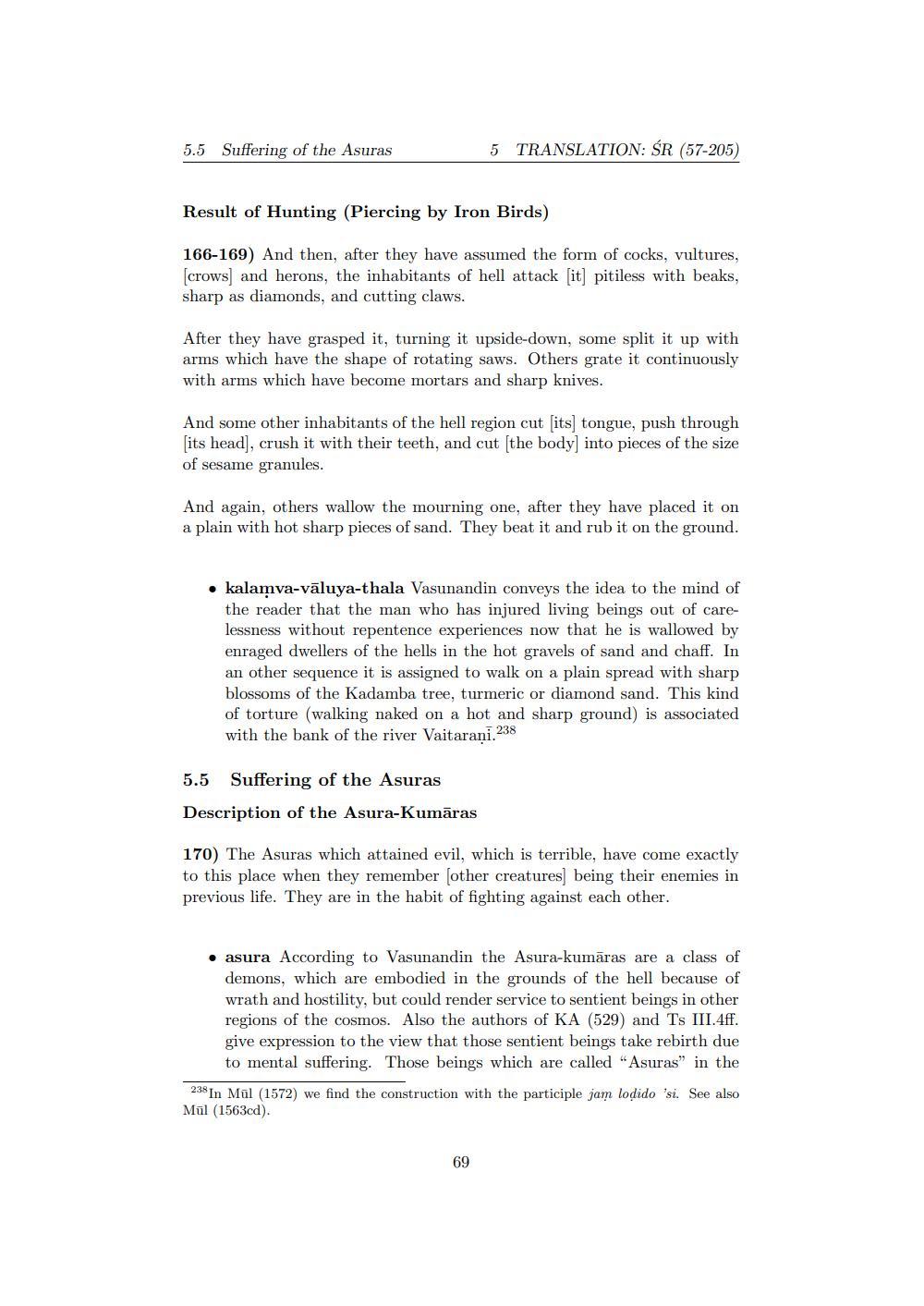________________
5.5
Suffering of the Asuras
5
TRANSLATION: SR (57-205)
Result of Hunting (Piercing by Iron Birds)
166-169) And then, after they have assumed the form of cocks, vultures, crows and herons, the inhabitants of hell attack [it] pitiless with beaks, sharp as diamonds, and cutting claws.
After they have grasped it, turning it upside-down, some split it up with arms which have the shape of rotating saws. Others grate it continuously with arms which have become mortars and sharp knives.
And some other inhabitants of the hell region cut fits tongue, push through [its head), crush it with their teeth, and cut the body) into pieces of the size of sesame granules.
And again, others wallow the mourning one, after they have placed it on a plain with hot sharp pieces of sand. They beat it and rub it on the ground.
kalamva-vāluya-thala Vasunandin conveys the idea to the mind of the reader that the man who has injured living beings out of carelessness without repentence experiences now that he is wallowed by enraged dwellers of the hells in the hot gravels of sand and chaff. In an other sequence it is assigned to walk on a plain spread with sharp blossoms of the Kadamba tree, turmeric or diamond sand. This kind of torture (walking naked on a hot and sharp ground) is associated with the bank of the river Vaitarani.238
5.5 Suffering of the Asuras Description of the Asura-Kumāras
170) The Asuras which attained evil, which is terrible, have come exactly to this place when they remember other creatures being their enemies in previous life. They are in the habit of fighting against each other.
• asura According to Vasunandin the Asura-kumāras are a class of
demons, which are embodied in the grounds of the hell because of wrath and hostility, but could render service to sentient beings in other regions of the cosmos. Also the authors of KA (529) and Ts III.4ff. give expression to the view that those sentient beings take rebirth due to mental suffering. Those beings which are called "Asuras" in the
238 In Mül (1572) we find the construction with the participle jam lodido 'si. See also Mül (1563cd).




